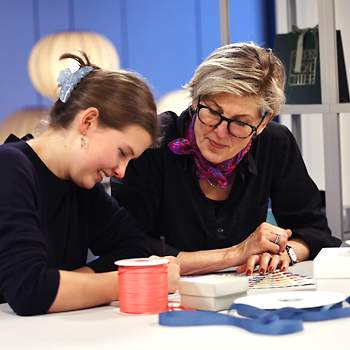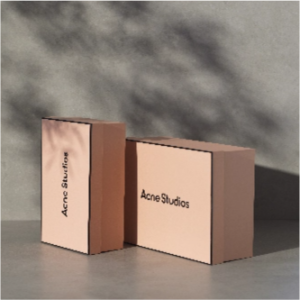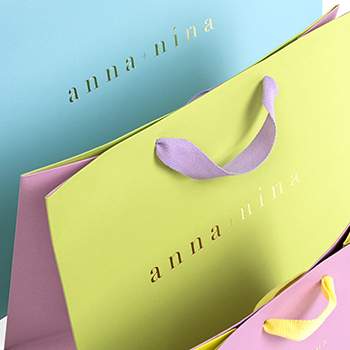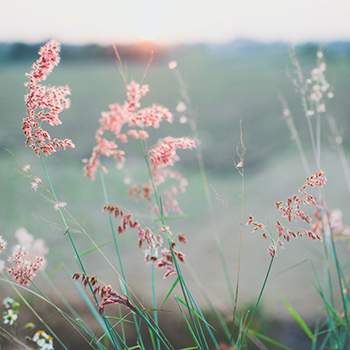Why choose FSC®-certified packaging?
You can help to protect nature and social conditions and promote responsible forest management by choosing FSC®-certified packaging.
- Article, Environment & Sustainability
FSC® is one of the global organisations working to promote responsible management and responsible use of the world’s forests. Sustainability and the environment are of growing importance to consumers when it comes to choosing products. Today, consumers often choose environmentally-friendly products, focusing on where the products come from and how they are produced. This is not just in relation to choice of food products, for example, but also in relation to packaging. With regards to FSC® and consumers’ familiarity with FSC®’s logo, a global study from 2017 found an average brand awareness level of 50% among 13 respondent countries.
Briefly about the article
Briefly about the article
In this blog post, you won’t just learn more about FSC®, FSC® certifications and what FSC® stands for – you’ll also learn why, with regards to CO2, it is sometimes better to cultivate the forest and use the trees rather than to leave them be:
• Who is FSC®? • What does the FSC® label stand for?
• How does FSC® ensure that its standards are adhered to?
• Which kinds of forest can be FSC® certified – and which types of wood are used?
• How many forests are FSC® certified?
• When do trees actually absorb or give off CO2?
• Which FSC®-certified packaging can Scanlux Packaging offer you?

Who is FSC®?
Forest Stewardship Council® is an international non-profit membership organisation and labelling scheme, established in Toronto in 1993 on the initiative of environmental and human rights organisations and forest owners from 26 different countries. The goal was to create common global principles for responsible forest management, including a new and credible system that guarantees responsibly produced wood and paper for consumers around the world. FSC® itself neither produces nor sells goods.
What does the FSC® label stand for?
The FSC® label is a guarantee that:
- In an FSC® forest, no more trees are felled than the forest can manage to reproduce. This helps to ensure a CO2-neutral forest.
- Animals and plant life are protected. Parts of FSC® forests are preserved completely, and areas with endangered animals and plants are protected.
- The people that work in the forests are ensured training, safety equipment, decent wages and the right to join or form trade unions.
- The local populations benefit from the forest revenues, and local labour is used.
- Indigenous peoples are ensured the right to use the forests as they did before, and are involved in the management of the forests. For example, sacred grounds and hunting grounds are exempted from felling.
For many of the world’s poorest countries, it is part of the national FSC® forest standard that a certain percentage of the profits from forestry practice goes to the construction of schools, clinics and more. FSC® is the only global labelling scheme that enjoys broad support from green organisations such as WWF, Greenpeace and Forests of the World. The FSC® label is found on all kinds of products made of wood fibre, such as grilling charcoal, floors, terraces, paper, furniture, jewellery and packaging.
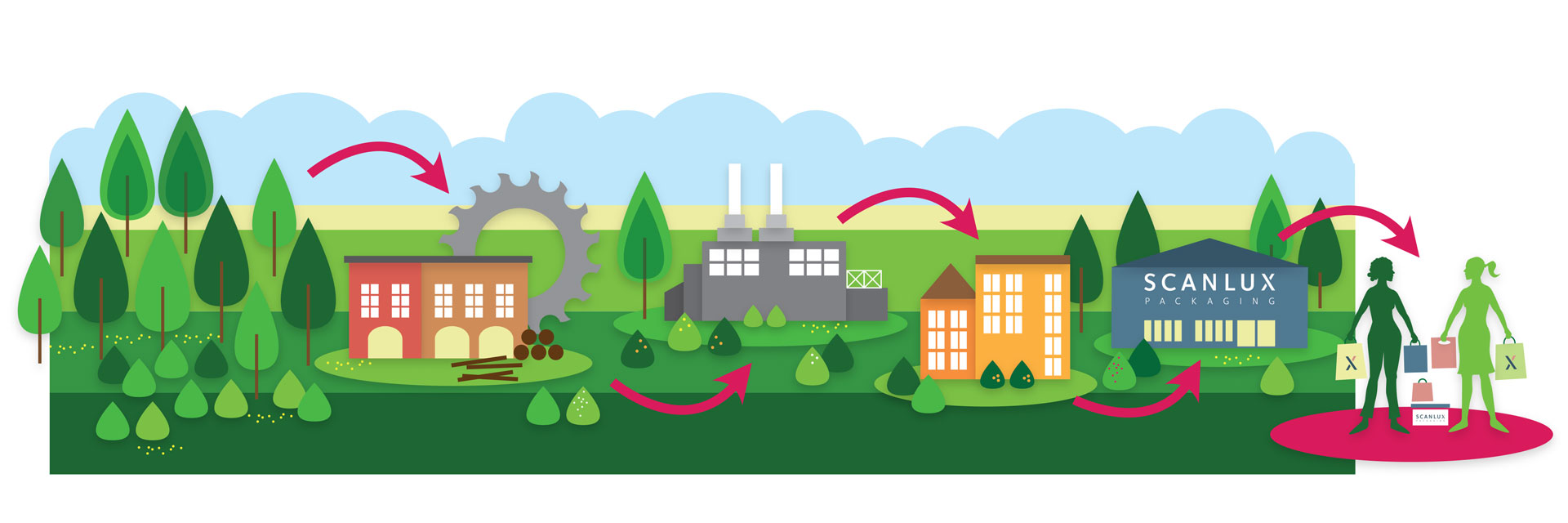
How does FSC® ensure that its standards are adhered to?
FSC® has a strict international control system: Wood must be able to be traced back to the forest it originated from. This is regardless of how many links there are between the forest and the store. Every single link in the chain between the forest and the consumers must have its own certification and its own certification number. This is how the FSC® system controls the traceability of your FSC® products. All links in the chain with a certification are controlled once a year with an inspection visit from an independent certification firm. Unannounced inspection visits are conducted as required.
Aside from the yearly inspection of the individual links in the chain, the FSC® also controls the certification firms and ensures that they are competent in certifying in accordance with FSC® standards. CoC certified companies must always be able to prove that they separate FSC® certified materials and materials from other sources during production and storage.
From forest to end user
FSC®-certified products are a guarantee for our costumers, that all materials derive from responsible forest management.
Forest Management (FM) certification: Forest owners or lessees can obtain a Forest Management certification (FM) by fulfilling FSC®’s principles and criteria for forest management. The forest owner or lessee is responsible for fulfilling and adhering to the rules of the national FSC® forest standard.
Chain-of-Custody (CoC) certification: In order to sell on or produce an FSC® certified product, a company must have a Chain of Custody certification (CoC). Forest owners, producers, wholesalers and others can obtain this certification. This is therefore certification of traceability, which ensures that the products sold as FSC® certified can be traced all the way from the tree in the forest to the final product sold to the consumer. All the links in the chain must have this certification before they can add FSC®’s logo to a product.



Which kinds of forest can be FSC® certified – and which kinds of wood are used?
All kinds of forest can be certified – FSC®’s rules for responsible forest management cover both tropical and temperate forests, therefore FSC®-labelled products include those of the kinds of wood we are familiar with in Europe, such as beech and ash.
How many forests are FSC®certified?
Over 200 million hectares of forest distributed across 86 countries were FSC® certified by the end of 2018. This area corresponds to around 20% of the size of Europe. The vast majority of these areas so far are found in the Western world.
Over the course of the past 15 years, the global FSC®-certified forest area has grown steadily from around 45 million hectares to a good 200 million hectares.
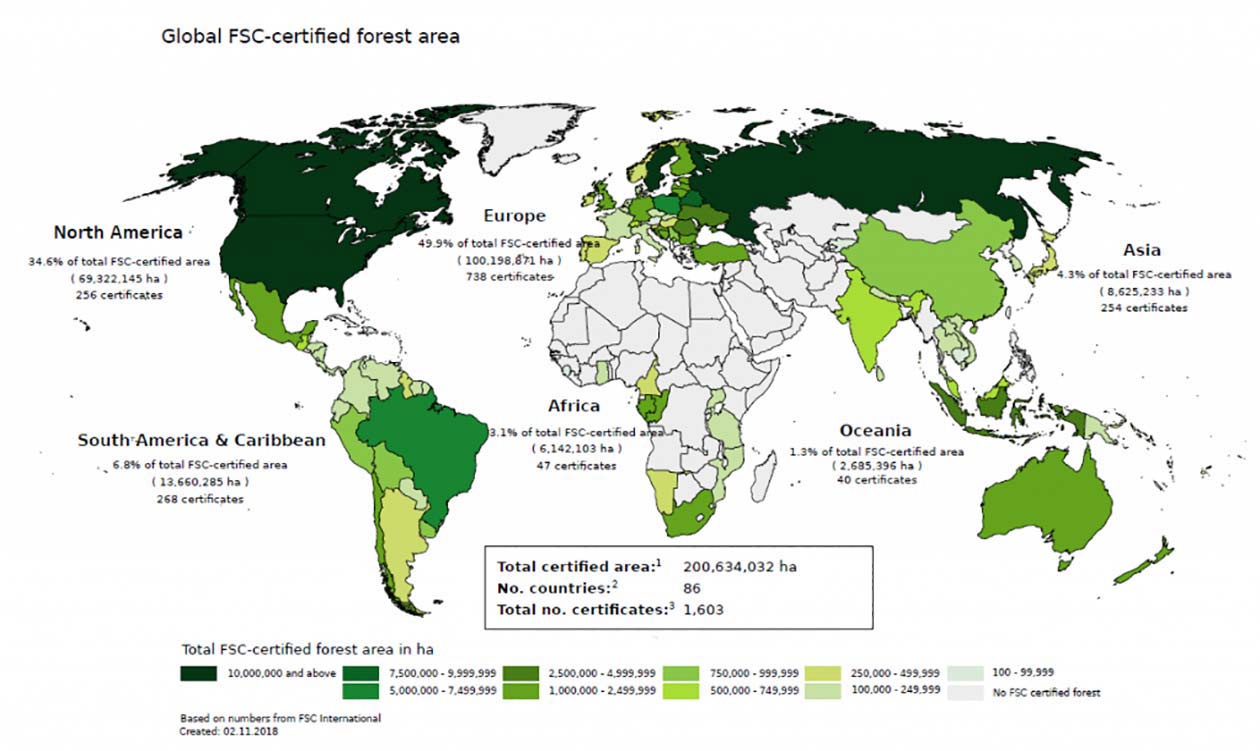
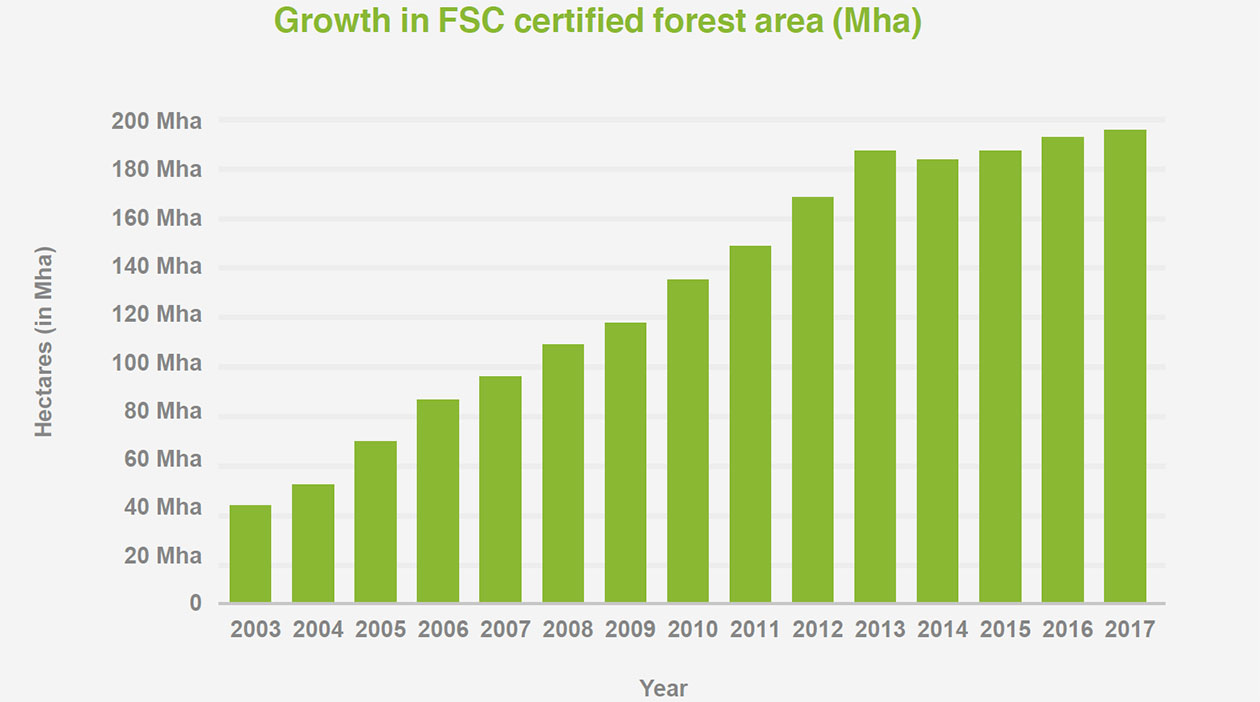
When do trees actually absorb or give off CO2?
The world’s forests, in particular rainforests, are often referred to as its ‘green lungs’.
When it’s light, the green leaves on trees (and plants) absorb CO2 from the air. Inside the leaf, CO2 is bound to water and made into the sugary substance glucose. This is transported by the tree into the branches, fruits, leaves and roots. In this way, CO2 is fixed in trees as carbon. There is just one waste material: oxygen (photosynthesis). As long as a tree is growing, it will absorb more CO2 than it gives out through respiration.
When a tree is fully grown, it reaches a stable level at which it respires just as much as it photosynthesizes. When the tree becomes old and decays, it will give off more CO2 than it absorbs via photosynthesis. If the tree is allowed to be broken down by nature, all the CO2 it has absorbed is given back to the atmosphere. Forest management allows people to become part of this cycle.
We can plant trees that absorb CO2 – and cut down the trees when they are fully grown and stop absorbing more CO2 than they release. If we plant new trees each time we cut one down, the tree we remove from the forest will be known as CO2-neutral. If we plant trees over a larger area, we will make for more CO2 absorption – and more storage of CO2.
Research by Sweden’s University of Agricultural Sciences shows that the faster the forest grows, the more CO2 it absorbs. From a climate perspective, it is therefore immediately better to cultivate the forest and use the trees than to leave it to its own devices – as long as the forest is cultivated in a sustainable manner and the environment is taken into account during wood production.


Which FSC®-certified packaging can Scanlux Packaging offer you?
Which FSC®-certified packaging can Scanlux Packaging offer you?
As a Scanlux Packaging customer, you always have the option of choosing environmentally-friendly solutions. We can offer FSC®-certified packaging, and we help our customers to analyse and optimise their packaging requirements so that it matches their brand and values.
All FSC® product groups such as paper bags, gift boxes, wrapping paper, silk tissue paper, corrugated cardboard and till rolls can be supplied in FSC® 100%, FSC® Mix and FSC® Recycled. Hangers can, however, only be supplied in FSC® 100%.
Here’s what other clients are doing:
Sustainable design for Björn Borg
Sources:
https://ic.fsc.org/en
FSC® Annual Report 2017 FSC, Facts & Figures, 2 November 2018 Forest Stewardship Council®: Global Strategic Plan 2015–2020
https://www.forestsoftheworld.org/ https://au.fsc.org/en-au
Skoven i Skolen: Ti spørgsmål og svar om skov, træ og klima: http://www.skoven-i-skolen.dk/content/10-sp%C3%B8rgsm%C3%A5l-og-svar-om-skov-tr%C3%A6-og-klima
Let's talk
We would like to hear from you if you have any question or need a quote. Fill out this form and one of us will get it touch with your shortly.
Other stories
ARTICLE
Important things to consider when buying eco-friendly and sustainable e-commerce packaging
The global retail industry is constantly changing. In particular, the e-commerce market is booming more than ever before.
Customer Case
Environment and Quality at the Heart of Filippa K
Filippa K focuses on the stylish and exclusive design made in quality materials. Of course, their bags should reflect the values.
ARTICLE
What are the different FSC®-certifications?
Explore the different FSC®-labels and find the pros and cons of using each.



